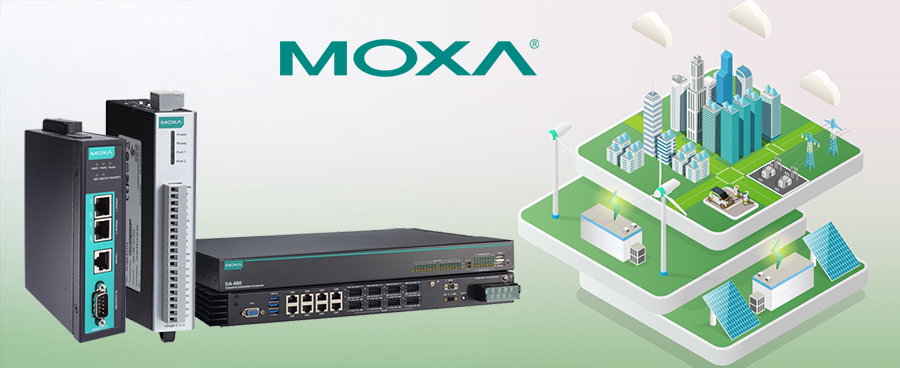How Do Battery Energy Storage Systems Enhance Industrial Sustainability?

Where would we be without energy? Our world relies on it. This means that energy consumption is at an all-time high, making it a bigger concern today than ever. With new, energy-intensive technologies like AI becoming commonplace, it begs the question of how we can mitigate our constant use of non-renewable energy sources. It’s becoming all the more important to consider energy efficiency and how we can diminish our environmental impact, including greenhouse gas emissions.
A Battery Energy Storage System (BESS) is, in simple terms, a container for electricity which is collected and stored with batteries. They provide a way to store electricity, which can then be accessed later, offering substantial benefits like enhanced grid stability and effective integration of renewable energy sources.
The elements that make a BESS function efficiently include reliable communication and networking solutions—and that's where MOXA come in. MOXA are known worldwide for their industrial-grade networking and automation products, which ensure that BESS operate smoothly and securely. By integrating MOXA's technology, we can optimise the performance of BESS, making significant strides in sustainable energy use and establishing a progression for a greener future.
So, how do BESS work, how do MOXA contribute to their efficiency, and what are the broader implications for sustainability?
What is Battery Energy Storage?
Battery Energy Storage Systems capture excess electricity during periods of low demand or abundant renewable generation from intermittent sources (such as solar panels and wind turbines) and store it for later use when demand peaks, or when those renewable sources diminish.
At the core of a BESS are the batteries, which can vary in type, including:
- Lead-acid – First-generation batteries, generally used in older systems. Compared to more modern, rechargeable batteries, they have low energy density (the amount of energy a battery can store relative to its weight or volume).
- Lithium-ion – The most common type in BESS, lithium stands out for its high efficiency, energy density, and longer lifespan with minimal need for maintenance. Their reliability is a key factor in the success of a BESS.
- Sodium-ion – Sodium-based batteries, a newer alternative, have somewhat lower costs associated with them thanks to the abundance and accessibility of sodium carbonate. However, they also feature a lower energy density compared to lithium-ion.
There are two main kinds of BESS: Front of the Meter (FTM) and Behind the Meter (BTM). FTM BESS are located on the utility side of the electric meter, meaning they are directly connected to the power grid. In contrast, BTM BESS are located on the customer side of the electric meter, meaning they are installed at the point of use, such as in homes, commercial buildings, or industrial facilities.

BESS – A Brief History
When did the implementation of BESS technology begin? The history of BESS aligns with the invention and evolution of battery technology, along with the budding demand for sustainable energy storage solutions. This dates back to the 1800s when Alessandro Volta invented the early electric battery, known as the voltaic pile. This innovation paved the way for future advancements as, in 1859, French physicist Gaston Planté developed the lead-acid battery—the first rechargeable electric battery—which remains in use today across various applications, including energy storage.
The late 20th century saw the advent of lithium-ion technology. Research into lithium-ion batteries in the 1980s focused on their potential for higher energy densities and efficiency, especially for portable electronics. In 1991, Sony and Asahi Kasei Corp. sold the first commercialised lithium-ion battery, a significant milestone in the progression of energy storage technology.
The early 2000s experienced a substantial rise in renewable energy usage like solar and wind, highlighting the need for efficient energy storage solutions. In the 2010s, significant advancements in battery technology and manufacturing processes led to the deployment of large-scale BESS. Notable projects include Tesla's rechargeable lithium-ion Powerwall products and the Hornsdale Power Reserve in South Australia. At the time, in 2015, the Hornsdale Power Reserve became one of the largest lithium-ion battery storage systems in the world.
Today, one of the largest BESS in the world is the Edwards & Sanborn Project. Based in California, it went live in early 2024 and features 875MWdc of solar PV and 3,287MWh of battery energy storage system capacity.
Why Are They Important?
Battery Energy Storage Systems are becoming indispensable in the energy industry today, and for some very practical reasons.
They are gaining popularity because they solve many challenges related to renewable energy, sustainability, and the modern power grid. Their primary function, to enable the integration of renewable energy sources into electricity grids, contributes towards the broader goal of transitioning to cleaner energy sources. By reducing reliance on fossil fuels and contributing to a more sustainable future, we can, in turn, contribute towards the UK’s goal to achieve net zero carbon emissions by 2050.
Enhancing Grid Stability and Reliability
Sustainable energy systems rely on stable and reliable energy grids. To help with this, BESS maintain grid stability by providing frequency regulation, which is achieved by quickly absorbing or releasing power to keep the grid frequency within its operational limits. Voltage support is another useful function, where BESS help to maintain the grid voltage at the required levels. These services are essential to prevent blackouts and ensure a stable supply of electricity.
In residential, commercial, and industrial settings, BESS offer backup power solutions that ensure continuity during power outages. This capability is especially important for critical infrastructures like hospitals, data centres, and emergency services, where even a brief power disruption can have severe consequences. By providing a reliable backup power source, BESS enhance the resilience of these systems against outages and disruptions. In regions prone to severe weather events and natural disasters, this backup power can be a lifesaver, making sure that essential services can keep running.
Reliability is vital when more renewable energy sources are integrated into the grid, as renewable sources are intermittent by nature and dependent on weather conditions. BESS effectively smooth out these fluctuations by storing excess renewable energy when available and dispatching it during periods of high demand or low renewable output, thereby enhancing the resilience of the electricity supply.
Energy Management and Efficiency
Beyond their role in grid stabilisation, BESS offer significant benefits in peak demand management and efficiency. By storing electricity during off-peak hours when energy prices are lower and releasing it during peak periods when prices are higher, BESS can help utilities to optimise their operations. This is called load shifting and is a proactive strategy that allows the redistribution of energy consumption, reducing the peak load on the grid and lowering electricity bills.
Renewable Energy Integration and Environmental Benefits
One of the most significant roles of a BESS is, of course, enabling the integration of renewable energy sources such as solar and wind power. These sources are inherently intermittent—solar power is available only during the day, while wind power depends on variable wind conditions. This is where BESS shine. By storing excess energy generated during peak production periods and releasing it when production is low or demand is high, BESS helps smooth out fluctuations and makes renewable energy more reliable and scalable.
This capability makes renewables more viable on a large scale. Additionally, BESS contributes to environmental sustainability by increasing reliance on renewable energy and reducing dependence on fossil fuels, which helps lower greenhouse gas emissions. By providing energy during peak demand periods, BESS also reduces the need for fossil-fuel-based power plants, ultimately shrinking the overall carbon footprint of the energy grid.
In a nutshell, BESS are making our power grids more reliable, contributing to the integration of renewable energy sources, providing critical backup power capabilities during grid disruptions, and helping the environment—all at the same time.
With substantial benefits like these, it’s no surprise that BESS are such highly regarded solutions today, making them a cornerstone of modern, sustainable energy systems. With that amount of power and global influence, it therefore requires a high level of monitoring and quality control – but how is this managed?

BESS and IEC 61850
IEC standards are extremely common and equally important in all corners of industrial computing. In this context, when handling BESS, the IEC 61850 standard is the most relevant in the interest of safety, efficiency, and ease of use.
IEC 61850 defines communication protocols for Intelligent Electronic Devices (IEDs) at substations, and this applies to integrating BESS into the broader energy grid. By providing a communication framework, IEC 61850 ensures seamless interoperability between different devices and systems. Adhering to this standard allows BESS components to communicate and interact effectively with other substation automation systems, such as transformers and circuit breakers.
The various grid services provided by BESS, including frequency regulation and voltage support, benefit from IEC 61850 compliance. The standard facilitates communication by providing the necessary data and control commands between BESS and grid operator systems. It also manages communication between the system, renewable generation sources, and the grid, further optimising energy management and ensuring grid stability.
Another key advantage of IEC 61850 is real-time communication, which is essential for monitoring and controlling BESS operations. Operators can proactively manage storage functions, such as charging/discharging cycles, and monitor battery health and state of charge using real-time data. The standard also ensures secure and reliable communications, with features like error detection, fault tolerance, and cybersecurity measures to prevent unauthorised access and data breaches, all critical for the safe operation of BESS.
MOXA Solutions for BESS
MOXA, an industry leader in manufacturing industrial devices, has many in their catalogue that help Battery Energy Storage Systems run efficiently and reliably. Among their main contributions are their industrial networking solutions, which include robust Ethernet switches, industrial NATs, and secure routers. These networking devices connect various components within a BESS, such as the Battery Management System (BMS), Energy Management System (EMS), and Power Conversion System (PCS).
- The Battery Management System (BMS) keeps a BESS healthy, controlled, and sustainable. It tracks the quality and performance of battery cells, ensuring their safe and efficient operation by monitoring key parameters such as temperature, state of charge, and cell health. If the battery status within a BESS becomes abnormal for any of these factors, such as overcharging or temperatures too high to operate safely, the Auxiliary System will raise an alert so that the issues can be addressed, and safe operation can continue. An Uninterruptible Power Supply (UPS) keeps the power levels stabilised by providing backup power in the event of a disruption, and an HVAC (Heating, Ventilation, and Air Conditioning) adjusts the environmental status within the container to ensure the temperature is kept at optimal levels.
- The Energy Management System (EMS) controls the power flow and monitors the state of charge within the BESS. It makes strategic decisions on when to charge or discharge the batteries based on real-time data, including energy demand, prices, and grid conditions.
- The Power Conversion System (PCS) converts electrical energy between alternating current (AC) and direct current (DC). This conversion is necessary for both charging the batteries and discharging the stored energy back to the grid or to end-users.
In addition to networking, MOXA's protocol conversion solutions allow for communication between various systems and devices within a BESS. MOXA's protocol gateways ensure interoperability and efficient data exchange, which is crucial for integrating BESS with other grid infrastructure and renewable energy sources, allowing for smooth and coordinated operation.
MOXA's solutions enable the integration of renewable energy sources, such as solar panels and wind turbines, into a BESS. Reliable data communication and control systems provided by MOXA are essential for managing the intermittent nature of renewable energy, optimising energy storage and release from BESS, and ensuring a stable and efficient energy supply. Through these various contributions, MOXA enhances the effectiveness of BESS, supporting the broader goal of sustainability via energy efficiency.
Reliability and security are equally important, and MOXA's industrial products are designed to withstand harsh environments, including extreme temperatures, humidity, and electromagnetic interference. This reliability is essential for BESS installations, which often operate in challenging conditions. MOXA also emphasises cybersecurity in its networking and communication solutions, providing devices that adhere to IEC 62443. Specifically, IEC 62443-4-2 outlines detailed cybersecurity requirements for individual Industrial Automation and Control System (IACS) components such as switches, routers, and firewalls. This ensures secure communication channels and robust cybersecurity measures to protect BESS from potential cyber threats.
MOXA’s BESS Product Portfolio
MOXA’s devices include:
- System-level Battery Management System:
- Arm-based computers such as the UC family.
- Thermal Management, Cooling System, HVAC Container Environment Monitoring:
- Serial Device Servers such as the NPort 5000.
- Ethernet Remote I/Os such as the ioLogic E1200.
- Protocol Gateways such as the MGate MB3000.
- Local EMS Computers:
- x86 Computers such as the DRP/BXP family.
- Secure Networking Connection:
- Ethernet Switches such as the EDS/RKS family.
- Secure Routers such as the EDR family.
- Industrial NAT devices.
Several of MOXA’s devices are also IEC 61850 compliant, such as the MGate 5119 Series substation gateway and DA-680 rack-mount substation computer.

Battery Energy Insight with Technology Know-how
Battery Energy Storage Systems are vital in modern energy management, providing essential services that make them key to achieving a more sustainable and resilient energy infrastructure. BESS are versatile and scalable, meaning they can be used in homes, businesses, or even on a large utility-scale. With ongoing advancements in battery technology, BESS are becoming even more efficient, making them key in the push for cleaner power systems that can handle the challenges of today and tomorrow.
MOXA contributes to the BESS ecosystem with its robust industrial networking, remote monitoring, data acquisition, and cybersecurity solutions. Today, BESS is quietly progressing how we manage electricity by making our grid more stable, integrating renewables smoothly, and ensuring we all have reliable electricity when we need it most.
At Impulse, we are committed to supporting the BESS industry by providing MOXA solutions that meet the specific needs of energy storage applications. By incorporating MOXA’s advanced technology, we can help our customers build efficient and resilient energy storage systems, contributing to a more sustainable future.
For more information, please get in touch with our knowledgeable team at 01782 337 800 or email sales@impulse-embedded.co.uk.